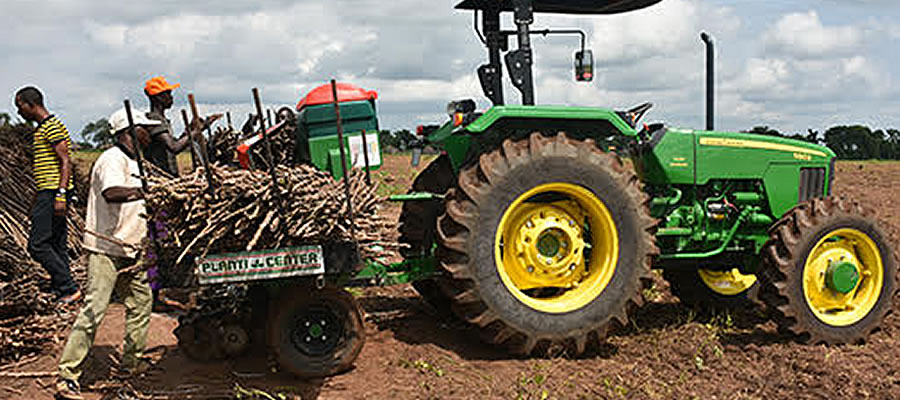

Population Size
According to the 2010 population and housing census, the total population of Asante Akim North Municipality is 69,186. This represents 1.4 percent of Ashanti Region’s population. The Municipality has five communities assuming urban status using a population of 5000 as a basis. They are Agogo, Domeabra, Juansa, Hwidiem and Wioso.
Population Density
Population density is the number of people per square kilometre of land. The Municipality’s population density for 2010 is 61.46 persons per square kilometer. This is lower than the regional density of 196.0 persons per square kilometer. On the other hand, the high population density may inflict severe strains on the available Municipality’s resources and infrastructure if not well managed.
Rural-Urban Split
The 2010 population and Housing Census depict a rural-urban split of 53.5:46.5 for the Municipality. The rural share of the population is 36,990 and the urban share is 32,196. However, with about 53.5 percent of the settlements in the Municipality being rural, it implies that majority of the settlements in the Municipality would be deprived of the provision of higher order services since they do not meet the required threshold.
Age-Sex Distribution
The distribution of the population by sex indicates that the male population is 33,731 (48.8%) and the female population is 35,455 (51.3%). This gives a sex ratio (i.e. number of males to 100 females) of 95.1. This further affirms the predominance of females in the Municipality.
The population pyramid in Figure 2.1 shows the age – sex structure of the Municipality. The broad base of the pyramid denotes a youthful population consisting of a large proportion of children under 15 years and a narrow apex made up of a small proportion of elderly persons (65 years and older) in the Municipality. This can be seen by a decline in the bars as the population advances in age.
Persons in the age cohort 0-14 years represents 39.9 percent, 15-64 years represent 54.8 percent and 65 years and above accounted for 5.3 percent of the total population in the Municipality. This implies that the Municipality has a greater percentage of labour force since a greater fraction of the population can be found in the economically active group.
Household Size and Characteristics
The average household size for the Municipality is 4.5.The average number of rooms per household is 2.0, and the average number of people in household per room is 2.95.The composition comprises persons from the nuclear family, extended family and persons outside the extended families. Heads of the households are mainly male. In the other households where females are heads, it is either they are single or a single parent household. Children constitute about 42.2 percent of the average household.
Spatial Organization
Distribution of Services by Settlement
The distribution of services by settlement in the Municipality was analysed by using the scalogram. The scalogram shows the spatial inequalities / equity in the distribution of facilities in the District. It also helps to establish the relationship between the spatial distribution of population and facilities.
In all twenty (20) Settlements with population above 400 were considered. Agogo, the district capital was found to be the only level one settlement in the district having all the Services under consideration followed by Hwidiem, Juansa Ananekrom and Pataban as level two settlements in the Municipality. The remaining settlement fell within the third and fourth level settlement in the district. The distribution of the services is presented in Appendix 1A.
It can be deduced from the analysis that to ensure spatial equity, there is the need to provide appropriate facilities and services in the settlements which have attained the minimum population threshold.
Migration (Emigration and Immigration)
The 2010 Population and Housing Census indicates that 15,004 migrants were recorded in the district. Of this number, 39.2 percent are from Ashanti region (intra- regional migration) and 60.8 percent are from other regions with the highest coming from the three Northern Regions.
Most of the migrants are engaged in farming activities while others are in Services/Commerce and few of them (Fulani’s) engaged in cattle rearing. The farmers are engaged mostly in the cultivation of cereals, yams and plantain and have contributed greatly to high production of these farm products in the district.
The activities of the Fulani’s on the other hand have serious security implications since their activities are causing loss of lives and properties as a result of the destruction of farms by their cattle which end up in conflict between the farmers and the herdsmen.
The migration of the indigenes on the other hand from the rural areas to the urban centers in search of non-existing white collar jobs increase the unemployment problem and reduces agricultural productivity and income.
Date Created : 11/21/2017 3:21:28 AM












 facebook
facebook
 twitter
twitter
 Youtube
Youtube
 +233 593 831 280
+233 593 831 280 0800 430 430
0800 430 430 GPS: GE-231-4383
GPS: GE-231-4383 info@ghanadistricts.com
info@ghanadistricts.com Box GP1044, Accra, Ghana
Box GP1044, Accra, Ghana